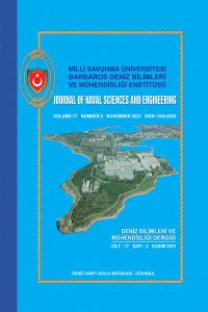Modeling Study of Solid Oxide Fuel Cell Operating on Reformed NATO F-76 Diesel Fuel
-
Modeling Study of Solid Oxide Fuel Cell Operating on Reformed NATO F-76 Diesel Fuel
Solid oxide fuel cell, Fuel cell modeling Diesel fuel,
___
- U.S. Department of Defense, 2006, MIL-DTL-16884L, Detail Specification Fuel Naval Distilate
- R. Suwanwarangkul, E. Croiset, M.W. Fowler, P.L. Douglas, E. Entchev, M.A. Douglas, Performance comparison of Fick’s, dusty-gas and Stefan–Maxwell models to predict the concentration overpotential of a SOFC anode, Journal of Power Sources 122 (2003) 9–18
- K.J. Daun, S.B. Beale, F. Liu, G.J. Smallwood, Radiation heat transfer in planar SOFC electrolytes, Journal of Power Sources 157 (2006) 302–310
- Andreassi L., Toro C., Ubertini S., 2007. Modeling carbon monoxide direct oxidation in solid oxide fuel cells. In Proceedings ASME European Fuel Cell Technology and Applications Conference, EFC2007-39057.
- C.F. Curtiss and R.B. Bird, Ind. Eng. Chem. Res., vol. 38, p. 2515, 1999.
- Perry RH. et al.,1997, Perry’s chemical engineers’ handbook. seventh ed.,New York: McGraw- Hill
- Matthew M. Mench, Fuel Cell Engines, 2008 by John Wiley & Sons, Inc.
- Dong Hyup Jeon, A comprehensive CFD model of anode-supported solid oxide fuel cells, Electrochimica Acta 54 (2009) 2727–2736
- Ezgi, Cüneyt, Design And Analysis Of NATO F-76 Diesel Fueled Solid Oxide Fuel Cell System Onboard Surface War Shıp Ph.D. Thesis, Ege University,Turkey (2009).
- Bossel, U., 1992, “Facts and Figures, Final Report on SOFC Data”, Swiss Federal Office of Energy, Operating Task II, Berne, Switzerland, April,
- Yakabe H, Sakurai T.,2004, 3D simulation on the current path in planar SOFCs Solid State Ionics, 174:295–302.
- Shi Yixiang, Cai Ningsheng, Li Chen., 2007, Numerical modelling of an anode-supported SOFC button cell considering anodic surface diffusion. J Power Sources 164:639–48.
- Hocine Ben Moussa, Bariza Zitouni, Kafia Oulmib, Bouziane Mahmahc, Maiouf Belhamelc, Philippe Mandind,2009, Hydrogen consumption and power density in a co-flow planar SOFC, International journal of hydrogen energy.
- R.B. Bird, W.E. Stewart, and E.N. Lightfoot, Transport Phenomena, Second edition, John Wiley & Sons, 2005.
- ISSN: 1304-2025
- Yayın Aralığı: 2
- Başlangıç: 2003
- Yayıncı: Milli Savunma Üniversitesi Deniz Harp Okulu Dekanlığı
BİYOLOJİK AĞLARDA AĞ MOTİFLERİ VE İNDEKSLEME TEKNİKLERİ
Micro and Pico Satellites in Maritime Security Operations
Modeling Study of Solid Oxide Fuel Cell Operating on Reformed NATO F-76 Diesel Fuel
A Brief Review on Examination of Exhaust Gas Dispersion on Naval Ships
Interpretation of Earthquake Effects on Mechanism Operation: An Experimental Approach
